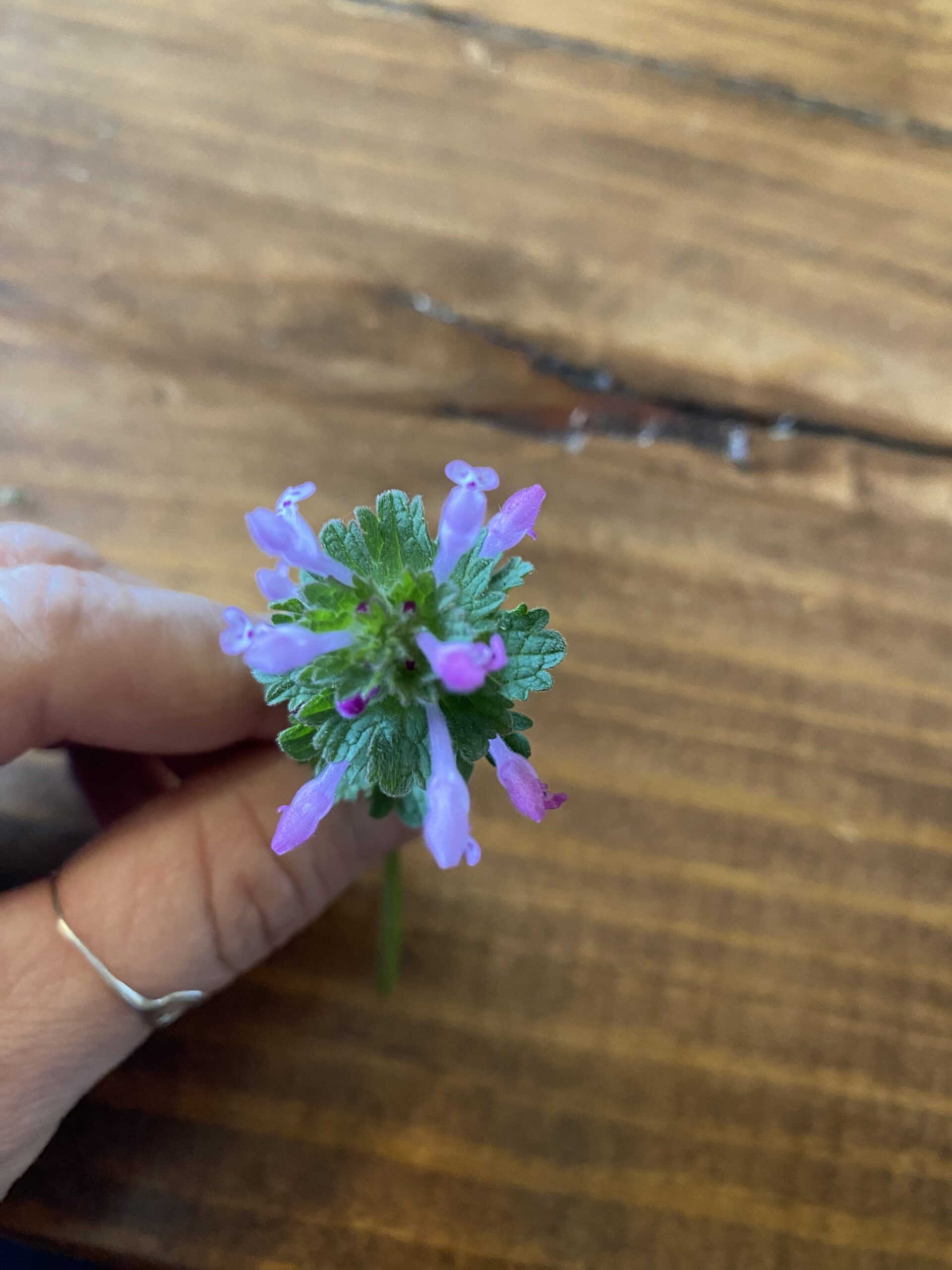Since everyone is spotlighting Purple Deadnettle this time of year, let’s talk about dead nettle’s cousin and widely spread friend Henbit. Lamium amplexicaule(means clasping or how it’s grabbing the stem) is commonly called henbit. It’s a weedy plant in the mint family (Lamiaceae). Dead Nettle is Lamium purpureum. They can resemble each other until you see them side by side, then there is no mistaking their differences.
Henbit v Dead Nettle
Both Henbit and Purple Dead Nettle are native to Europe, Asia, and Northern Africa, but are now widespread in North America. The flowers of henbit are longer and more slender than those of purple deadnettle. The leaves of purple deadnettle at the apex of the stems are tinted purple and fade to green as they mature. Henbit has a square stem that’s a pretty cool identifier and it’s an excellent early food for bees and other pollinators. It flowers in late winter – early spring. The flowers are pinkish-purple and tubular, and you have probably seen fields of them near your house. The leaves are scalloped with opposite pairs and the upper leaves don’t have petioles. Henbit tastes “green” while dead nettle is peppery. I love giving a ton of this to my ducks and chickens!
This mighty plant, that is not a pesky weed, is beneficial for erosion control. It’s high in iron, magnesium, manganese, calcium, and vitamins A, C, E, and K, as well as a whole host of beneficial antioxidants and phytochemicals. “Medicinally, Henbit is best used internally as a tea. It is anti-rheumatic and anti-inflammatory, so it’s great for relieving chronic pain, soreness, and stiffness. As a diaphoretic and febrifuge, it’s great for breaking fevers and alleviating their unpleasantness. It helps balance the digestive system – it’s a gentle laxative, but also helps treat diarrhea and indigestion. Finally, it can help with menstrual cramps and excessive bleeding. For this reason, women who are pregnant should probably avoid it”. Otherwise, it’s safe, although you should still follow the general rule of 6-8 ounces of tea until you figure out how you react to it. It is a mild laxative. Externally, it can make a useful poultice. It’s an astringent, antiseptic, and anti-inflammatory, so it’s a good candidate to use as a spit poultice or water poultice for treating cuts, scrapes, burns, stings, and the like as you do with chickweed.
Leave It Be
Don’t mow it. Don’t spray it. Just enjoy it.



